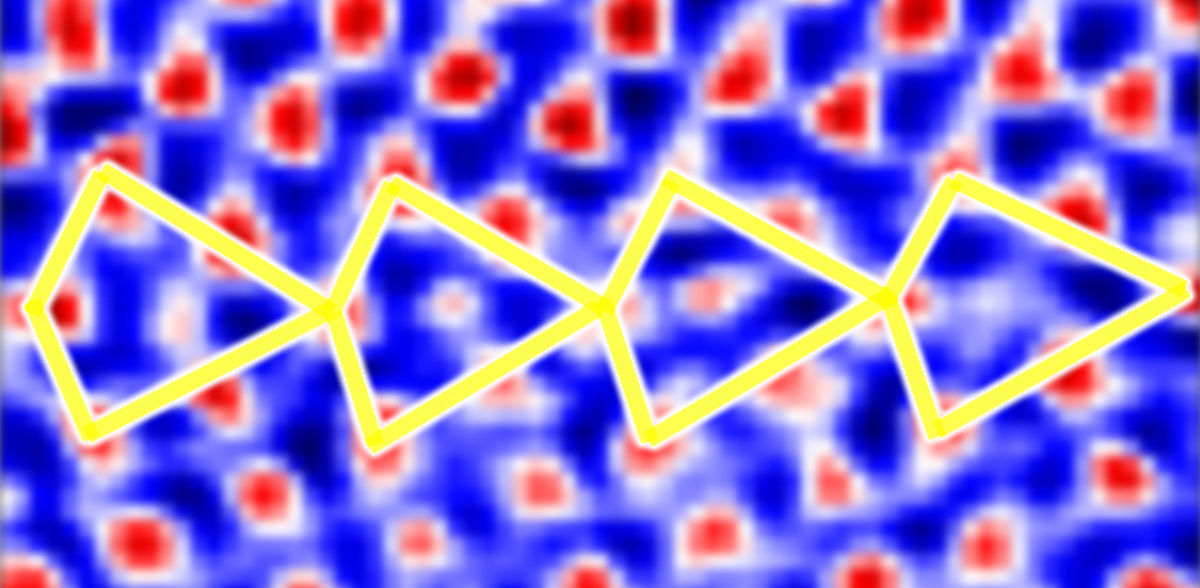Seeing light elements in a grain boundary: A further step in unravelling materials’ properties down to the atomic scale
Scientists of the Max-Planck-Institut für Eisenforschung develop a workflow and code to characterize defects in steels
To develop advanced materials, a deep understanding of their underlying microstructure and chemistry is necessary. Knowing how defects influence the interplay between microstructure and chemical composition is crucial, as they are the entry gate for material’s failure due to corrosion or crack initiation. Scientists of the Max-Planck-Institut für Eisenforschung (MPIE) now developed a workflow and code to analyse and interpret two-dimensional defects, known as grain boundaries, in steels. They identified that certain ordered atomic motifs, the smallest structural hierarchical level in materials, govern the most important chemical properties of grain boundaries. Engineering those atomic motifs paves the way to more durable, tailor-made materials. The MPIE researchers now published their results in the journal Nature Communications.
Atomic motifs govern chemical properties of grain boundaries
“The main two challenges in analysing grain boundaries down to their atomic scale is firstly, the huge amount of parameters that must be controlled in order to understand the effect of each parameter on the material’s properties. And secondly, the difficulty in observing light elements with transmission electron microscopy. We developed a workflow and code for transmission electron microscopy that involves growing bicrystals of an iron-boron-carbon alloy with the same crystal orientation but changing grain boundary planes. This way, we were able to control the interfering parameters. To interpret the data, I developed a code that helps seeing light elements like boron and carbon in the iron grain boundaries. That is actually the first time we have been able to observe light elements in the grain boundaries of heavy metals, like iron”, explains Dr. Xuyang Zhou, first author of the publication and deputy head of the group “Atom Probe Tomography” at MPIE. The researchers showed that even the mere tilt in the grain boundary plane with identical misorientation impacts the chemical composition and atomic arrangement of the microstructure and makes the material more or less prone to failure.
“Until now, it was not possible to image the light and heavy elements in the atomic motifs of grain boundaries in steel. Especially, the open space in ordered atomic structures, so called interstitial sites determine the solubility of light elements in a grain boundary. This will in future enable the targeted design and passivation of the chemical state of grain boundaries to free them from their role as entry gates for corrosion, hydrogen embrittlement, or mechanical failure”, explains Prof. Gerhard Dehm, co-author of the publication and director of the MPIE department “Structure and Nano-/Micromechanics of Materials”. The scientists also used machine learning to analyse the grain boundary composition in data gained through atom probe tomography. The tomography shows how different elements are distributed in the grain boundary, offering the possibility to generate statistical analysis of the structure-composition correlation.
Next steps: Simulations and in-situ testing
The researcher team is now working together with the department “Computational Materials Design” at MPIE to use the developed code and experimental data for simulating how light elements like boron, carbon or hydrogen behave in materials. Moreover, Zhou and his colleagues are developing set ups for in-situ heating and tensile tests in transmission electron microscopes to further analyse the grain boundary behaviour under changing external conditions. This study provides direct experimental evidence for understanding the chemical nature of grain boundaries on the basis of their atomic-scale structural properties.
Original publication

Get the analytics and lab tech industry in your inbox
By submitting this form you agree that LUMITOS AG will send you the newsletter(s) selected above by email. Your data will not be passed on to third parties. Your data will be stored and processed in accordance with our data protection regulations. LUMITOS may contact you by email for the purpose of advertising or market and opinion surveys. You can revoke your consent at any time without giving reasons to LUMITOS AG, Ernst-Augustin-Str. 2, 12489 Berlin, Germany or by e-mail at revoke@lumitos.com with effect for the future. In addition, each email contains a link to unsubscribe from the corresponding newsletter.























































